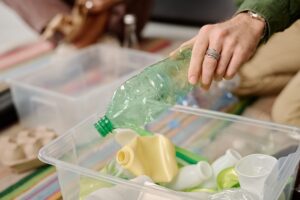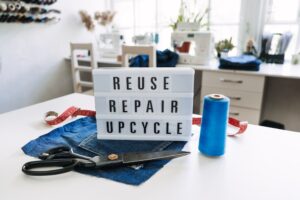Ocean pollution is a major environmental problem affecting our planet’s health and the well-being of all living creatures, including humans. One of the causes of ocean pollution is the wreckage of boats, planes, cars, and other vehicles that end up deep in the ocean. Such wrecks can contain hazardous materials, such as oil, fuel, or toxic chemicals, harming marine ecosystems and the creatures that depend on them.
Preventing ocean pollution caused by wreckage and hazardous materials is critical to protect marine ecosystems and the health of our planet. This article will explore five ways to keep wrecks and hazardous materials out of the water.
Proper Waste Disposal and Recycling
Proper waste disposal and recycling are critical to preventing debris from entering the ocean. When waste is not disposed of properly, it can end up in rivers, streams, and, ultimately, the ocean. Recycling as much as possible, using proper waste management practices, and avoiding littering is essential.
One way to reduce waste is by reducing single-use plastics, such as plastic bags and straws. These items are commonly found in the ocean and can harm marine wildlife. To reduce single-use plastics, consider using reusable bags, bottles, and straws instead.
Another way to reduce waste is through composting. Composting is the process of breaking down organic matter, such as food scraps and yard waste, into nutrient-rich soil. By composting, you can reduce the amount of waste that ends up in landfills and, ultimately, the ocean.
Waste-to-energy technologies also effectively reduce the amount of waste that ends up in landfills. Waste-to-energy technologies use waste as a fuel to generate energy, reducing the need for fossil fuels and reducing the amount of waste that ends up in the ocean.
2) Recycling and Repurposing Materials
Recycling and repurposing materials can help reduce the need for new resources and reduce waste. When materials are recycled, they are transformed into new products, reducing the need for new resources. When materials are repurposed, they are given a new life, reducing waste.
One way to repurpose materials is by converting plastic bottles into clothing. Plastic bottles can be recycled into polyester, which can be used to make clothing. By transforming plastic bottles into clothing, we can effectively reduce the volume of plastic waste that finds its way into the ocean.
Shipping containers can also be repurposed into homes or offices. Shipping containers are durable and can be transformed into livable spaces.
Designing products and packaging with recyclability and repurposing in mind is also critical. By designing products and packaging that can be recycled or repurposed, we can reduce waste and the need for new resources.
3) Improved Transportation Safety
Improved transportation safety is critical to prevent accidents and wreckage in the ocean. Accidents resulting in ocean wreckage can often be prevented by improving transportation safety. This can involve better training for drivers, pilots, and boat operators and implementing and enforcing stricter safety regulations.
Proper maintenance of boats, airplanes, and automobiles is also critical in preventing accidents and wreckage. Regular maintenance can identify potential problems and prevent accidents from occurring.
Enforcing speed limits and traffic laws can also prevent accidents from occurring. Speeding and reckless driving can lead to accidents and wreckage in the ocean.
Human error, such as distracted driving or pilot fatigue, is also a significant cause of accidents. Addressing human error through better training and regulations can prevent accidents and wreckage in the ocean.
4) Awareness and Education
Raising awareness and educating people about the impacts of ocean debris is critical in promoting responsible behavior and preventing ocean pollution. Education can help people understand the importance of reducing waste, recycling, and proper waste management.
Beach cleanups are a great way to raise awareness and promote responsible behavior. By participating in beach cleanups, people can see firsthand the impact of ocean pollution and the importance of proper waste management.
Public education campaigns and school programs can also help raise awareness and promote responsible behavior. These campaigns can educate people about the impacts of ocean pollution and provide information on how to reduce waste and recycle.
Social media and other digital platforms can also be powerful tools for raising awareness and promoting change. People can reach a broader audience and encourage positive change by sharing information and promoting responsible behavior online.
5) Improved Waste Management in Coastal Communities
Effective waste management in coastal communities is critical in preventing waste from entering the ocean. Integrated waste management systems can effectively reduce waste and promote proper waste management.
Zero waste communities, for example, aim to eliminate waste entirely by implementing waste reduction programs, composting, and recycling. These communities focus on reducing waste at the source and promoting sustainable living.
Source reduction programs that reduce the use of single-use plastics can also effectively reduce waste. By reducing the amount of waste that enters the ocean, we can protect marine ecosystems and the creatures that depend on them.
Developing countries and marginalized communities often lack adequate waste management infrastructure, leading to waste entering the ocean. Addressing this issue through improved waste management systems and infrastructure can prevent waste from entering the ocean and promote sustainability.
6) Technological Solutions
Technological solutions can also play a significant role in preventing ocean pollution. Drones can be used to monitor ocean debris and identify areas where waste is accumulating. Biodegradable materials can be used to reduce the amount of waste that ends up in the ocean, and filtration systems can be used to clean up ocean plastic.
New technologies are being developed to reduce ocean pollution and promote sustainability. For example, researchers are developing materials that can be dissolved in seawater, reducing the amount of plastic waste that ends up in the ocean.
Final Thoughts
Preventing ocean pollution caused by wreckage and hazardous materials is critical in protecting marine ecosystems and the health of our planet. By implementing these five strategies, we can reduce waste, promote responsible behavior, and prevent debris from entering the ocean. With the help of education, improved waste management, and technological solutions, we can protect our oceans and the creatures that depend on them for generations to come.








Reader Interactions